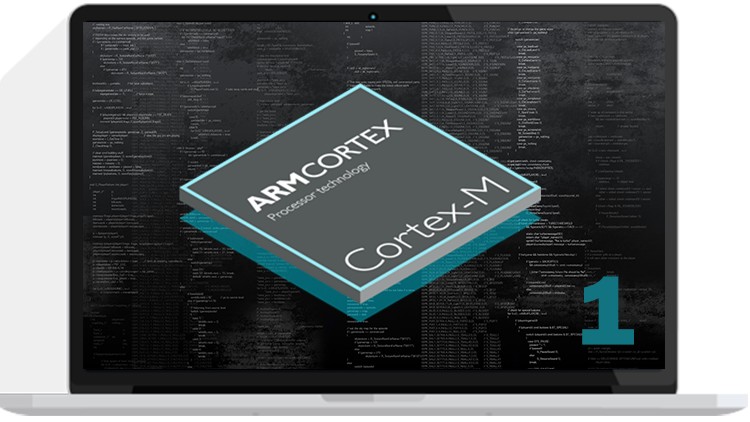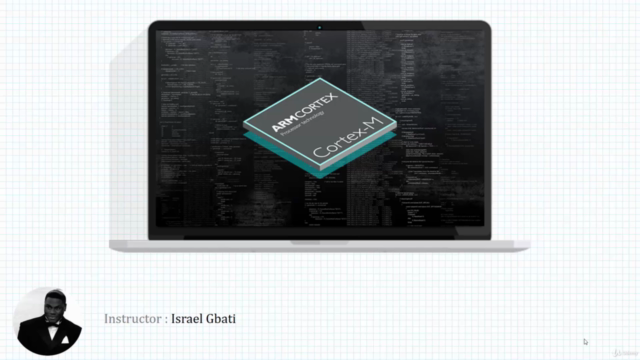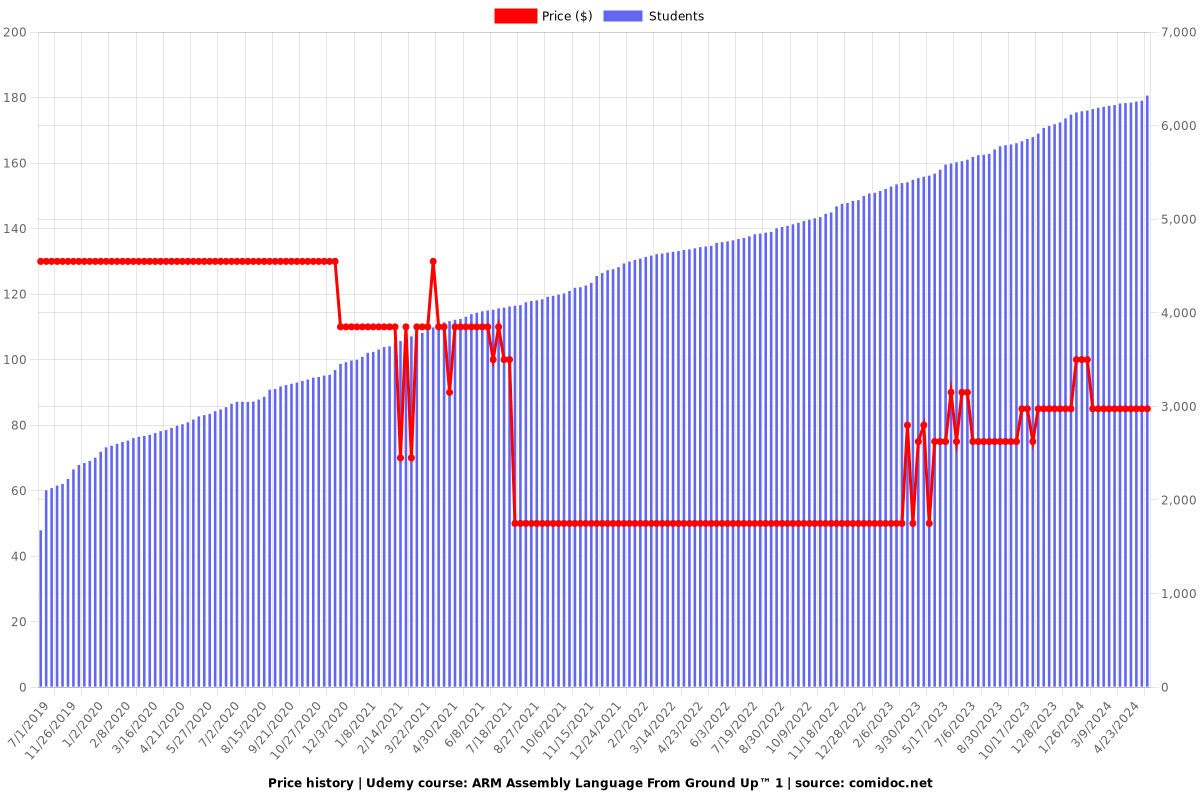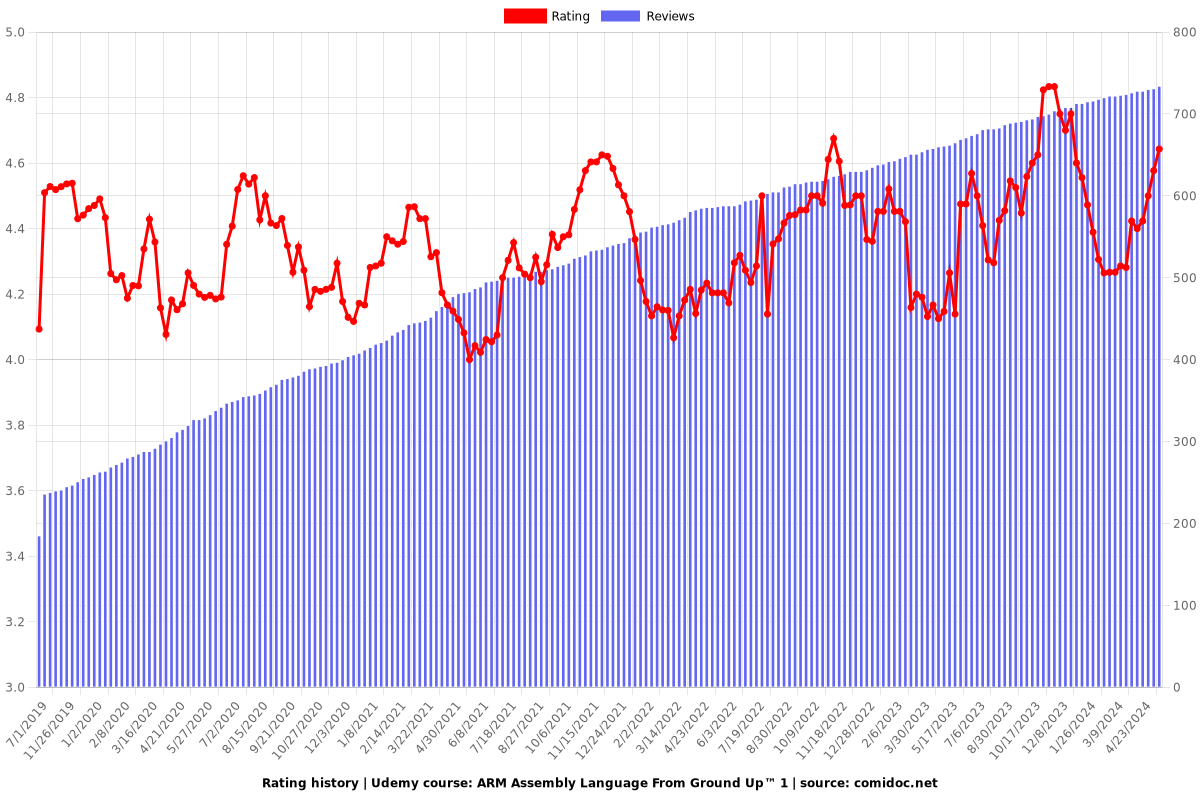ARM Assembly Language From Ground Up™ 1
Build over 50 Assembly Programs - ARM Instruction Set, Peripheral Driver Development, Algorithms, DSP routines etc.
4.50 (730 reviews)

6,264
students
15 hours
content
Feb 2022
last update
$84.99
regular price
What you will learn
Master the ARM Instruction Set
Master the Thumb and Thumb-2 Instruction Sets
Understand the ARM Design Philosophy
Understand RISC Architecture
Master creating Data Structures in Assembly
Master creating State Machines in Assembly
Master building complex Algorithms in Assembly
Master writing hardware Drivers in Assembly
Be able to create Lookup Tables and Jump Tables in Assembly
Be able to understand and apply the IEEE- 754 Floating point standard
Why take this course?
🎓 **Course Title:** ARM Assembly Language From Ground Up™
---
🚀 **Headline:** Build over 50 Assembly Programs - Dive Deep into the ARM Instruction Set, Peripheral Driver Development, Algorithms, and DSP Routines!
---
👋 **Welcome to ARM Assembly Programming From Ground Up™ 1** 🎉
Dive headfirst into the world of low-level programming with our comprehensive course designed for aspiring ARM embedded developers. Whether you're a beginner or looking to sharpen your skills, this course will guide you through every concept of ARM systems design and architecture with ease and clarity.
---
**Course Overview:**
- **ARM Systems Design & Architecture:** Lay the foundation for understanding ARM processors.
- **Practical Assembly Programming:** Transition your knowledge into practical skills through hands-on projects.
- **Mastery of Instruction Sets:** Gain expertise in the ARM, Thumb, and Thumb-2 instruction sets.
- **Data Structure Creation:** Implement data structures such as FIFO and LIFO from scratch.
- **Finite State Machines (FSM):** Learn to design Moore and Mealy Machines.
- **Complex Algorithm Development:** Solve advanced problems with algorithms for Binary Search, Taylor Series, and the Bisection Algorithm.
- **Real-World Applications:** Apply your knowledge to perform tasks like driver development and digital signal processing (DSP).
---
**What You'll Learn:**
🎯 **ARM Instruction Set:** Command a comprehensive understanding of ARM instructions.
🎯 **Thumb Instruction Set:** Master the Thumb instruction set for more efficient code.
🎯 **Thumb-2 Instruction Set:** Explore the advanced features of Thumb-2 to further optimize your programs.
🎯 **Data Structure Implementation:** Build essential data structures, enhancing your programming toolkit.
🎯 **Finite State Machine Design:** Create and implement FSMs for a variety of applications.
🎯 **Algorithm Mastery:** Solve complex problems with Binary Search, Taylor Series, and the Bisection Algorithm.
---
**Why Take This Course?**
✅ **Hands-On Projects:** Over 50 hands-on projects to apply what you learn.
✅ **Step-by-Step Learning:** Engaging video tutorials that break down complex topics into digestible lessons.
✅ **Expert Guidance:** Learn from an experienced instructor who specializes in ARM assembly language.
✅ **Full Money Back Guarantee:** 30 days risk-free to ensure your satisfaction.
---
📆 **Enroll Now and Transform Your Coding Skills!*
Don't miss the opportunity to become an expert in ARM assembly language. With our detailed curriculum, supportive community, and a full money-back guarantee for 30 days, you have nothing to lose and everything to gain.
Sign up today and let's embark on this exciting journey to master ARM assembly programming! 🛠️✨
*Remember to check the course schedule for Part 2, which will cover more advanced topics in detail.*
Screenshots




Our review
Based on the feedback you've provided, it seems that the course has a mix of strengths and areas for improvement. Here are some key points from your feedback:
1. **Content Relevance**: There's a desire for the course to focus more on modern microcontrollers (like CortexM) rather than older ones (like ARM7). Additionally, using free GNU tools instead of proprietary ones like Keil could be beneficial for learners who prefer or have access to those tools.
2. **Platform Independence**: Some users feel left out because the course is primarily based on Windows, and it would be helpful if the course could cater to users on MacOS and Linux as well.
3. **Practicality and Efficiency**: There are repeated setups for target configurations across lectures that could be streamlined or skipped to save time. Also, some users mentioned that having a guide for which development board to use would be useful.
4. **Teaching Style and Clarity**: The teaching style varies from reading instructions out loud without enough context, to not explaining the purpose of certain instructions (like `ALIGN`). Some users appreciate the detailed explanations, while others find them unnecessary or prefer a more structured approach that connects theory with practice in a clearer manner.
5. **Documentation and Resources**: Some users suggest having all relevant documentation, like the KEIL "Assembler User Guide," readily available during the course and recommend having the source code downloads complete and ready to use.
6. **Order of Presentation**: The order in which information is presented can sometimes be confusing, with later concepts being introduced before their foundational counterparts are explained, leading to a sense of missing pieces.
7. **Engagement and Updates**: Some users feel that the instructor has not engaged much with the course's audience or updated it to fix errors and include newer content (like using GCC GNU assembler).
8. **Accessibility and Notes**: The course could be improved by making it easier to take notes, perhaps by sharing slides or improving the readability of the code on smaller screens.
9. **Learning Path and Resources**: Users recommend supplementing this course with additional resources for a more comprehensive learning experience.
10. **Overall Value**: Many users find the course valuable, especially for those who are willing to put in the effort to learn and not expect everything to be explained step-by-step. It's seen as a good introduction, especially for those with some programming background.
Regarding your specific question about converting floating-point numbers to hexadecimal and vice versa in assembly, this is indeed a common task that you would need to perform in low-level programming. The method to do this would depend on the specific assembler you are using and the ABI (Application Binary Interface) of the system you are targeting. Generally, you would use instructions to convert the floating-point value to an integer representation and then to hexadecimal if needed. The ARM instruction set includes instructions for performing these conversions, such as `VCMNK` for converting a floating-point number to an integer and `CVT` family of instructions for conversion between different data types in later versions of the ARM architecture.
For example, in the ARM architectures from ARMv6E onwards, you could use the `VCGT` instruction to convert a double-precision floating-point value from the floating-point register `VFD0` to an unsigned integer value stored in the general-purpose integer registers. Here's how you might do it:
```assembly
VMX K1,R1 // K1 is the floating-point number
MO R2,R1 // Copy the floating-point register into a general-purpose register
VCGT GT,R2 // Convert to an unsigned integer (32-bit)
MO R3,R2 // Store the result back into a general-purpose register
```
For conversion to hexadecimal string, you would typically use higher-level functions provided by the runtime library rather than individual assembly instructions. These functions would take the integer value as input and return a string in hexadecimal format.
Charts
Price

Rating

Enrollment distribution

Related Topics
1550502
udemy ID
2/11/2018
course created date
7/1/2019
course indexed date
Bot
course submited by